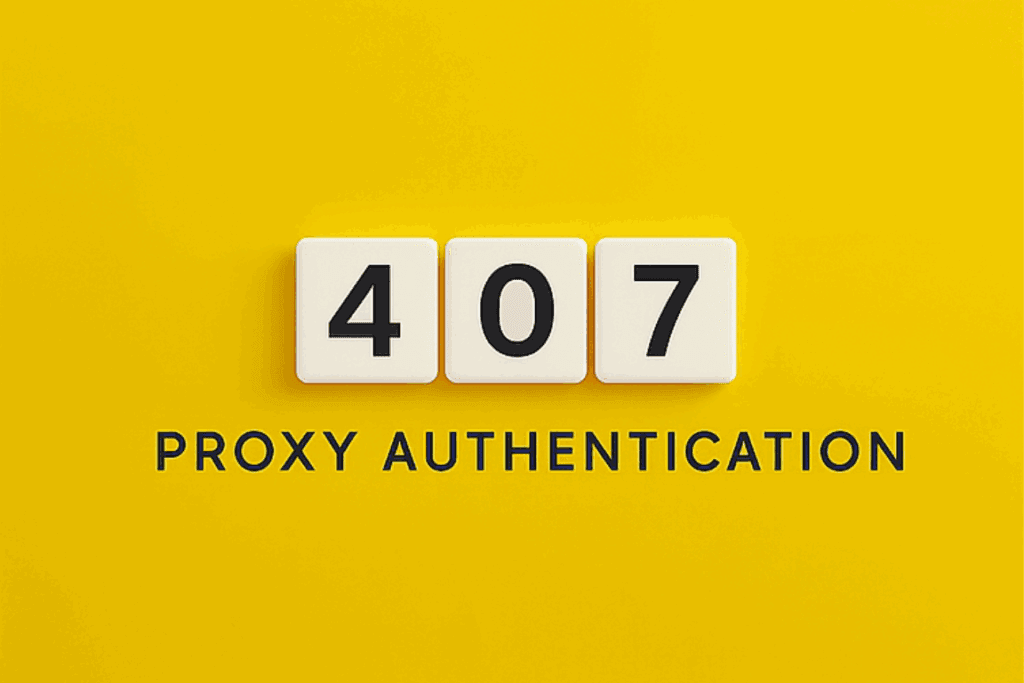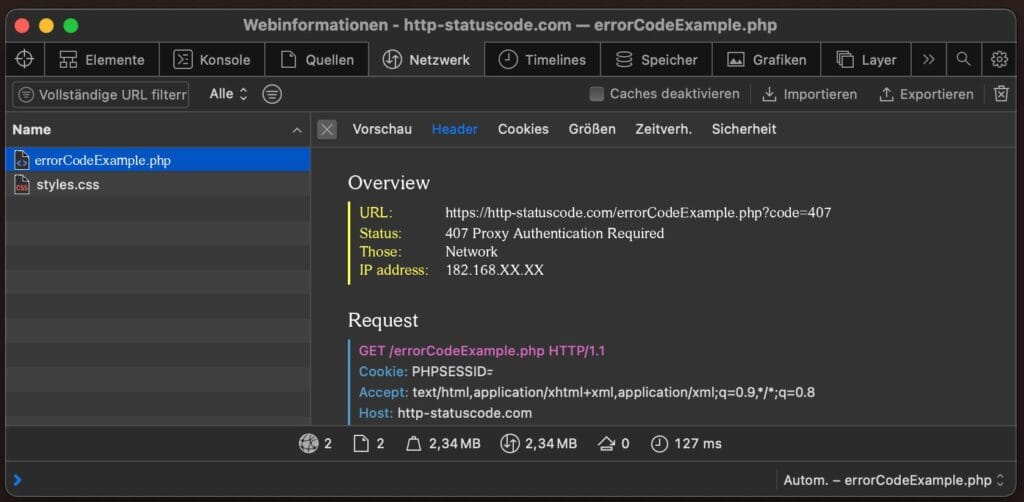
You open a URL, but instead of the expected page, you get an error message. No 404, no 500. What you see is: 407 Proxy Authentication Required. Or in some cases: http error 407.
The name alone raises questions. What does a proxy have to do with this error? And why do you have to authenticate?
This error message usually comes not from the server you are trying to get the content from, but from a proxy server in between. The 407 status code means the proxy intercepted your request, but won't proceed without valid login credentials.
What exactly does a 407 do?
A 407 status code is part of the 4xx series: errors on the client side. In this case, it is not an error in the request itself, but an additional requirement along the way.
Between you and the server is a proxy, such as for caching, monitoring or security. That proxy expects you to identify yourself before you are allowed to proceed.
In the headers of the response, the proxy indicates how to authenticate, via a Proxy-Authenticate field. So it is a variant of the 401 Unauthorized error, but not towards the server itself, but towards the intermediate proxy.
For example, the response looks like this:
HTTP/1.1 407 Proxy Authentication Required
Proxy-Authenticate:Basic realm="ProxyZone"
Without valid credentials, the request stops there. The proxy refuses to forward to the target server.
When do you encounter http error 407?
You usually encounter a 407 error in environments where network traffic is controlled through an intermediate layer. Consider:
- Corporate networks with central Internet filters or firewalls
- Authentication proxies at API gateways
- Local networks using Squid or another caching proxy
In all these cases, as a client, you must first identify yourself to the proxy. Without that step, you can't access remote servers or endpoints. So the error is more common in corporate or managed networks than on the open Internet.
How do you recognize a 407 error?
In the browser, you usually see a bare message like:
407 Proxy Authentication Required
The client must first authenticate itself with the proxy.
With more advanced tools, such as Postman or a curl call, you see the status code and any headers immediately:
curl -x http://proxy.example.com:3128 https://jouwsite.nl/
If no authentication is included, you get:
HTTP/1.1 407 Proxy Authentication Required
Some systems also provide a popup or request for login, depending on how the proxy is set up.
How do you fix a 407 error?

An http error 407 can be resolved by sending the correct login credentials along towards the proxy. How you do that depends on the context:
- In a browser: log in when prompted. Some proxies use NTLM or Basic auth.
- In code or scripts: set proxy settings, including username and password.
- In tools like curl or wget: use flags like -proxy-user to pass credentials.
- In an API call: check that your authentication headers for the proxy are placed correctly, separate from the headers you send to the actual server.
If you don't have access to the proxy or don't know what login information is required, contact the network administrator or IT department. Without that step, you will continue to encounter the 407.
What should you remember?
A 407 status code is not a sign that the server is unreachable. Nor that the URL is wrong. It simply means there is an additional checkpoint along the way: a proxy that wants to know who you are.
Without that step, the door remains closed, no matter how correct your request is otherwise.
If you're working in a controlled network environment, it's good to understand where this error is coming from, and how to get past it. Usually it's a matter of the right headers, or the right credentials.
Are you seeing an http error 407? Then it's not a server-side debugging issue. The challenge is before you get there. At the intermediate stop. And you have to pass that one first.